


In urban and suburban areas, solar photovoltaic arrays are commonly used on rooftops to supplement power use; often the building will have a pre-existing connection to the power grid, in which case the energy produced by the PV array will be sold back to the utility in some sort of net metering agreement. In more rural areas, ground-mounted PV systems are more common. The systems may also be equipped with a battery backup system to compensate for a potentially unreliable power grid. In agricultural settings, the array may be used to directly power DC pumps, without the need for an inverter. In remote settings such as mountainous areas, islands, or other places where a power grid is unavailable, solar arrays can be used as the sole source of electricity, usually by charging a storage battery. Satellites use solar arrays for their power. In particular the International Space Station uses multiple solar arrays to power all the equipment on board. Solar photovoltaic panels are frequently applied in satellite power. However, costs of production have been reduced in recent years for more widespread use through production and technological advances. For example, single crystal silicon solar cells have largely been replaced by less expensive multicrystalline silicon solar cells, and thin film silicon solar cells have also been developed recently at lower costs of production yet (see Solar cell). Although they are reduced in energy conversion efficiency from single crystalline Si wafers, they are also much easier to produce at comparably lower costs. Together with a storage battery, photovoltaics have become commonplace for certain low-power applications, such as signal buoys or devices in remote areas or simply where connection to the electricity mains would be impractical. In experimental form they have even been used to power automobiles in races such as the World solar challenge across Australia. Many yachts and land vehicles use them to charge on-board batteries.
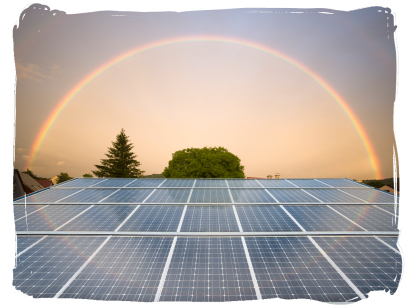
Solar hot water is water heated by the use of solar energy. Solar heating
systems are generally composed of solar thermal collectors, a fluid system
to move the heat from the collector to its point of usage. The system may
use electricity for pumping the fluid, and have a reservoir or tank for heat
storage and subsequent use. The systems may be used to heat water for a wide
variety of uses, including home, business and industrial uses. Heating
swimming pools, underfloor heating or energy input for space heating are
more specific examples.
In many climates, a solar heating system can provide up to 85% of domestic
hot water energy. In many northern European countries, combined hot water
and space heating systems (solar combisystems) are used to provide 15 to 25%
of home heating energy. In the southern regions of Africa like Zimbabwe,
solar water heaters have been gaining popularity, thanks to the Austrian and
other EU-funded projects that are promoting more environmentally friendly
water heating solutions.
Residential solar thermal installations can be subdivided into two kinds of
systems: compact and pumped systems. Both typically include an auxiliary
energy source (electric heating element or connection to a gas or fuel oil
central heating system) that is activated when the water in the tank falls
below a minimum temperature setting such as 50 ℃. Hence, hot water is
always available. The combination of solar hot water heating and using the
back-up heat from a wood stove chimney to heat water can enable a hot water
system to work all year round in cooler climates without the supplemental
heat requirement of a solar hot water system being met with fossil fuels or
electricity.
Among pumped options, there is an important distinction to be made regarding
the sustainability of the design of the system. This relates to what source
of energy powers the pump and its controls. The type of pumped solar thermal
systems which use mains electricity to pump the fluid through the panels are
called low carbon solar because the pumping negates the carbon savings of
the solar by about 20%, according to data in a report called "Side by side
testing of eight solar water heatings" by DTI UK. However, zero-carbon
pumped solar thermal systems use solar electricity which is generated onsite
using photovoltaics to pump the fluid and to operate its control
electronics. This represents a zero operational carbon footprint and is
becoming an important design goal for innovative solar thermal systems.
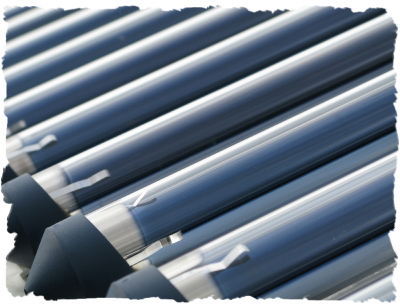
Use of solar shades is a proposed approach to the mitigation of global warming through planetary engineering. By intentionally changing the Earth's albedo, or reflectivity, scientists propose that we could reflect more heat back out into space, or intercept sunlight before it reaches the Earth through a literal shade built in space. A 0.5% albedo increase would roughly halve the effect of CO2 doubling.
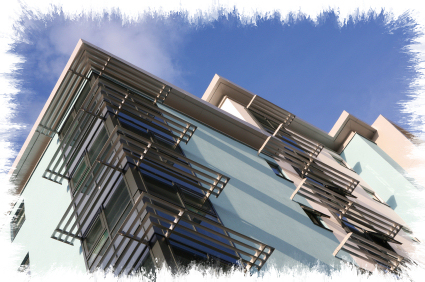
Thermal mass, in the most general sense, is any material that has the
capacity to store heat. The following discussion pertains to its functional
application in ecologically-sustainable building construction. When used
correctly, it can significantly reduce the requirement for active heating
and cooling systems and the consumption of active solar, renewable energy,
and especially fossil fuel technologies.
Thermal mass should not be confused with insulation. Materials used for
insulation typically have much lower thermal conductivity than materials
used for thermal mass and generally do not have a high capacity to store
heat. They can reduce unwanted heat transfer but are not significant sources
of heat in themselves. Often a combination of good insulation and thermal
mass is used to achieve an optimum solution. When correctly incorporated in
building construction, it can be a useful method of controlling the flow or
storage of heat to maintain thermal comfort.
The historic use of thermal mass in housing has been well established in hot
arid climates or warm temperate regions. In cold temperate areas, it must be
combined with good passive solar design to be effective. Its use in hot,
humid areas is controversial. Many buildings contain 'incidental' thermal
mass, e.g. timber frame, plasterboard ('drywall') and furniture. Specific
materials which are used to increase thermal mass include clay brick, mud
brick ('adobe'), stabilised or rammed earth (pise), stone, concrete, and
water.
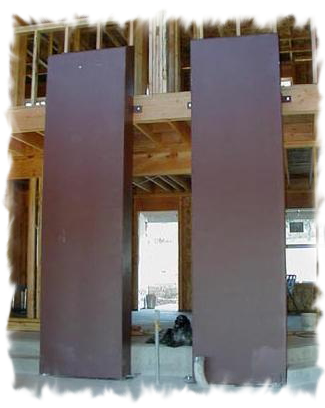
Heat recovery ventilation is a ventilation system that employs a
counter-flow heat exchanger between the inbound and outbound air flow. HRV
provide fresh air and improved climate control, while also saving energy by
reducing the heating (or cooling) requirements.
Heat Recovery Ventilators (HRVs), as the name implies, recover the heat
energy in the exhaust air, and transfer it to fresh air as it enters the
building. Energy recovery ventilators (ERVs) are closely related, however
ERVs also transfer the humidity level of the exhaust air to the intake air.
As building efficiency is improved with insulation and weather-stripping,
buildings are intentionally made more air-tight, and consequently less well
ventilated. Since all buildings require a source of fresh air, the need for
HRVs has become obvious. While opening a window does provide ventilation,
the building's heat and humidity will then be lost in the winter and gained
in the summer, both of which are undesirable for the indoor climate and for
energy efficiency, since the building's HVAC systems must compensate. HRV
technology offers an optimal solution: fresh air, better climate control and
energy efficiency.
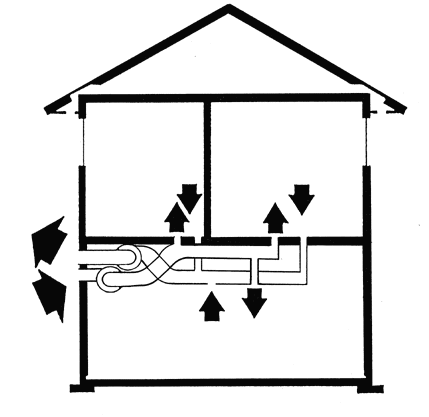
Superinsulation is an approach to building design, construction, and
retrofitting. A superinsulated house is intended to be heated predominantly
by intrinsic heat sources (waste heat generated by appliances and the body
heat of the occupants), without using passive solar building design
techniques or large amounts of thermal mass, and with very small amounts of
backup heat. This has been demonstrated to work in very cold climates but
requires close attention to construction details in addition to the
insulation.
Some may consider that superinsulation is an alternative to passive solar
design (although many building designs include features of both with special
attention to preventing summer overheating). Superinsulation is one of the
ancestors of the passive house approach. A related approach to efficient
building design is zero energy building.

Low Energy Lighting refers to a type of lighting that utilizes
light-emitting diodes (LEDs), organic light-emitting diodes (OLED), or
polymer light-emitting diodes (PLED) as sources of illumination rather than
electrical filaments or gas.
The term "solid state" refers to the fact that light in an LED is emitted
from a solid object (a block of semiconductor) rather than from a vacuum or
gas tube, as is the case in traditional incandescent light bulbs and
fluorescent lamps. Unlike traditional lighting, however, SSL creates visible
light with reduced heat generation or parasitic energy dissipation. In
addition, its solid-state nature provides for greater resistance to shock,
vibration, and wear, thereby increasing its lifespan significantly.
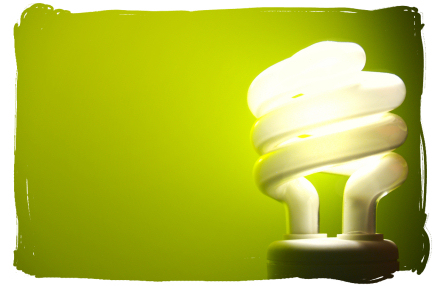
Micro wind turbines may be as small as a fifty watt generator for boat or
caravan use. Small units often have direct drive generators, direct current
output, aeroelastic blades, lifetime bearings and use a vane to point into
the wind. Larger, more costly turbines generally have geared power trains,
alternating current output, flaps and are actively pointed into the wind.
Direct drive generators and aeroelastic blades for large wind turbines are
being researched.
A small wind turbine can be installed on a roof. Installation issues then
include the strength of the roof, vibration, and the turbulence caused by
the roof ledge. Small-scale rooftop wind turbines have been known to be able
to generate power from 10% to up to 25% of the electricity required of a
regular domestic household dwelling.
The turbines for residential scale use are available, they are usually
approximately 7 feet (2 m) to 25 feet (8 m) in diameter and produce
electricity at a rate of 900 watts to 10,000 watts at their tested wind
speed. Some units have been designed to be very lightweight in their
construction, e.g. 16 kilograms (35 lb), allowing sensitivity to minor wind
movements and a rapid response to wind gusts typically found in urban
settings and easy mounting much like a television antenna. It is claimed
that they are inaudible even a few feet under the turbine. Dynamic braking
regulates the speed by dumping excess energy, so that the turbine continues
to produce electricity even in high winds. The dynamic braking resistor may
be installed inside the building to provide heat (during high winds when
more heat is lost by the building, while more heat is also produced by the
braking resistor). The location makes low voltage (around 12 volt)
distribution practical.
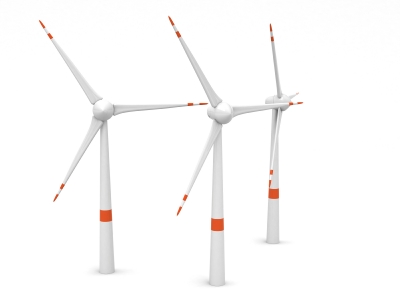
Copyright © FROG. All rights reserved. Website Design By Lee Prangnell.